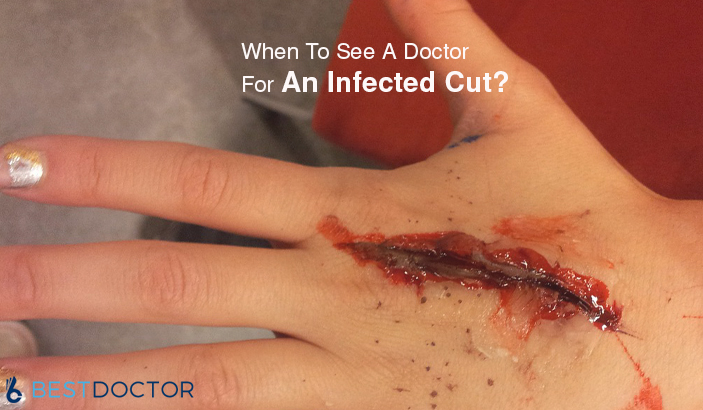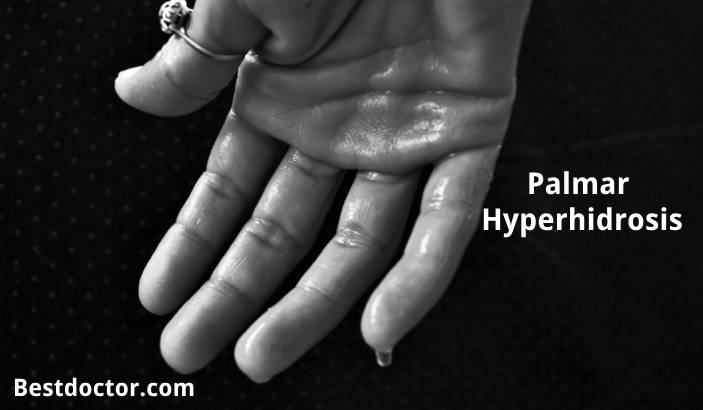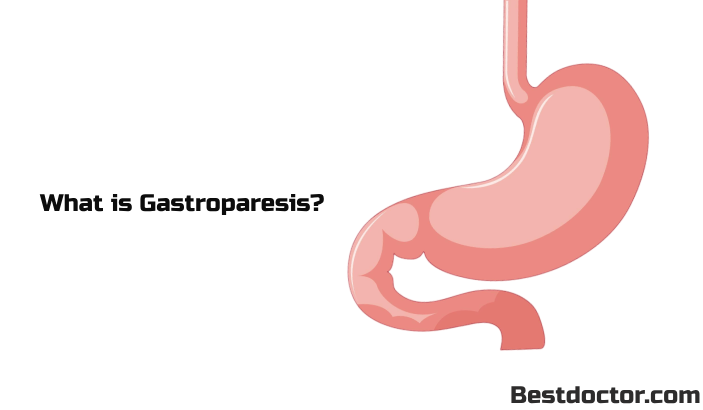If there are any doubts about infection rather see a doctor as delaying could result in much more severe conditions and even death in severe cases.
Infected Cut Symptoms
If any of the following symptoms present themselves after around two days, see a doctor immediately.
- Increased redness and or red streaks under the surface of the skin, indicating that the infection is not only present but spreading
- Pus
- Any foul odor present around the wound
- Pain and fever
- Heat around the wound
If the infected cut was received from a bite or a rusty object such as a nail, then these are increased risk factors, and a doctor should make sure there is no infection. Life-threatening diseases such as osteomyelitis, cellulitis, and necrotizing fasciitis (like flesh-eating bacteria) could be contracted through inaction at critical stages.
When To See A Doctor For An Infected Cut?
If a cut is healing properly, the infection will not occur. So if there are any signs of infection, then ask a doctor about the infected cut. The doctor will assess if antibiotics alone will be enough to treat the infection. Debridement might be needed, which is where contaminated or dead tissue is removed from the infected cut. This treatment would be useful to treat a severely infected cut that is closed. In the infected wound healing stages, the infection is brought under control with any or all of the following methods:
- Antibiotics
- Debridement
- Removal of foreign objects
Do not attempt to heal an infected cut at home, especially one that is closed. Treating an infected cut that is closed at home is one of the worst ideas. If proper care had been given in the first place, the cut would not have gotten infected, so go see a doctor. To help the infected wound healing stages along until the doctor can give treatment, make sure to apply antibacterial ointment after a hot compress has been applied to the infected area at least three times a day. The heat helps with the absorption of the active healing ingredients in the antibacterial ointment.
Infected Cut Causes
A normal cut, especially sutures received after a surgical operation, will remain pink or slightly red because active healing is taking place. Problems arise when the infection is present in the wound, and healing is being impaired in some way. Soaking the infected area in a saline (salt) solution once or twice daily and then applying antiseptic ointment with clean gauze to the wound will go a long way in preventing infection in the first place.
Infected cuts are often caused by foreign objects remaining in the wound, or poor wound cleaning and hygiene. There are also certain people who are more susceptible to infections than others. These people include the elderly, obese, diabetic, malnourished, or stressed. If the infected cut or wound was received from a human or animal bite, or a rusty object, then see a doctor as you may need a tetanus shot.
Infected Wound Healing Stages
The first stage of the wound healing process is hemostasis. Before any healing can take place, the blood flow needs to be stopped. Only when the flow has been stopped can the second stage take place.
The second stage in the wound healing process is the inflammatory stage, where a sort of battle is going on in the body. At this stage, the immune system (white blood cell) is working overtime to deal with the exterior threat (infection). Huge amounts of pus (dead white blood cells) could be produced at this stage, and this is usually not a problem unless the pus has a particularly unpleasant odor.
The third wound healing stage is proliferation. This term comes from “proliferate” (pro = something favorable or increasing). The proliferative phase involves itself with increasing tissue to fill the wound. This stage is referred to as the proliferative stage because the end goal here is to create tissue which is capable of surviving.
If the wound is maturing or entering the fourth phase, which is the maturation phase, then all is going well. The scar tissue which has been formed is both remarkable and weak, and care must still be taken. The tissue (skin) has basically been reconstructed from liquids and is very flexible and susceptible.

Doctor, author and fitness enthusiast, Ahmed Zayed, MD, is a surgery resident with a passion for helping people live a happy healthy life. He is the author of numerous health-related books and contributor to several medicine, health and wellbeing.








Enhancing Your Career Opportunities with Improved Vision from LASIK Surgery in Manhattan
What Does Cloudy Urine Mean in Females and Males?
Palmar Hyperhidrosis: Understanding Causes, Symptoms, and Treatment
16 Warning Signs You Need to Go See Your Doctor As Early As Possible